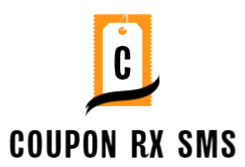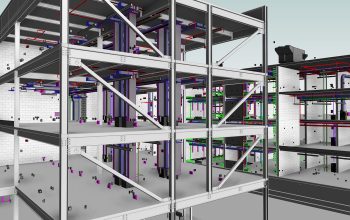Understanding the plumbing system is crucial for both homeowners and businesses. A well-maintained plumbing system ensures proper water supply, efficient drainage, and waste management. This comprehensive guide will delve into various aspects of plumbing systems, including installation, maintenance, common issues, and tips for optimal water usage. Whether you own a home or a business, this guide will provide valuable insights into Plumbing systems, helping you make informed decisions and address plumbing-related concerns.

Article Outline:
- Types of Plumbing Systems 1.1. Water Supply System: – Exploring the main water supply line – Differentiating between municipal and well water 1.2. Drainage System: – Understanding the drainage system and its components – Differentiating between wastewater and stormwater drainage 1.3. Venting System: – The importance of venting in plumbing systems – How vents prevent sewer gas buildup 1.4. Fixtures and Appliances: – Overview of common fixtures and appliances in plumbing systems – Understanding their functions and maintenance requirements
- Plumbing Installation 2.1. Hiring a Professional Plumber: – The benefits of hiring a licensed and experienced plumber – Tips for selecting a reliable plumbing contractor 2.2. Planning and Designing the System: – Factors to consider when designing a plumbing system – Creating a layout for optimal functionality and efficiency 2.3. Choosing the Right Pipes and Fittings: – An overview of different types of pipes and fittings – Factors to consider when selecting materials for pipes and fittings 2.4. Installation Process Step-by-Step: – A detailed walkthrough of the plumbing installation process – Ensuring proper connections and adherence to building codes
- Maintaining Your Plumbing System 3.1. Regular Inspections and Maintenance Checks: – The importance of routine inspections – Identifying potential issues before they escalate 3.2. Clearing Clogs and Blockages: – Effective methods for clearing common clogs – Preventive measures to avoid blockages 3.3. Preventive Measures for Pipe Leaks: – Detecting and addressing pipe leaks promptly – Tips for preventing future leaks and water damage 3.4. Water Heater Maintenance: – Essential maintenance tasks for water heaters – Extending the lifespan of your water heating system
- Common Plumbing Issues and Troubleshooting 4.1. Dripping Faucets: – Causes of dripping faucets and potential fixes – Replacing worn-out washers and O-rings 4.2. Clogged Drains: – Identifying the causes of clogged drains – Using plungers, drain snakes, and chemical cleaners for unclogging 4.3. Low Water Pressure: – Understanding the reasons behind low water pressure – Solutions for improving water pressure in the plumbing system 4.4. Leaky Pipes: – Detecting and repairing leaks in pipes – Temporary fixes and permanent solutions for leaky pipes 4.5. Running Toilets: – Troubleshooting running toilets and addressing common issues – Repairing or replacing faulty toilet components
- Efficient Water Usage Tips 5.1. Installing Low-Flow Fixtures: – Benefits of low-flow toilets, faucets, and showerheads – Step-by-step installation guide for low-flow fixtures 5.2. Water Conservation Techniques: – Practical tips for conserving water in daily activities – Implementing water-saving habits in homes and businesses 5.3. Fixing Leaks Promptly: – The importance of addressing leaks promptly – Tools and methods for detecting and repairing leaks 5.4. Greywater Systems: – Exploring the concept of greywater and its uses – Installing and maintaining greywater recycling systems
- Plumbing Safety Precautions 6.1. Understanding Shut-Off Valves: – Locating and operating shut-off valves in emergencies – Shutting off the water supply to specific fixtures or the entire system 6.2. Dealing with Plumbing Emergencies: – Handling burst pipes, major leaks, and sewer backups – Steps to take while waiting for professional assistance 6.3. Handling Chemicals and Tools Safely: – Safety guidelines for using chemicals and plumbing tools – Protective measures to prevent accidents and injuries
- Upgrading and Renovating Plumbing Systems 7.1. Assessing the Need for Upgrades: – Indicators that your plumbing system requires an upgrade – Evaluating the efficiency and functionality of existing systems 7.2. Incorporating Energy-Efficient Features: – Exploring energy-efficient options for plumbing systems – Upgrading to high-efficiency fixtures and appliances 7.3. Hiring Professional Contractors: – Selecting experienced contractors for plumbing upgrades – Obtaining necessary permits and complying with regulations
- Eco-Friendly Plumbing Practices 8.1. Rainwater Harvesting: – Collecting and utilizing rainwater for various purposes – Installing rainwater harvesting systems 8.2. Solar Water Heating Systems: – Harnessing solar energy for water heating – The benefits and installation process of solar water heaters 8.3. Sustainable Drainage Solutions: – Implementing sustainable drainage systems for stormwater management – Using permeable surfaces and rain gardens
Conclusion:
By following this comprehensive guide, homeowners and businesses can thoroughly understand plumbing systems and their components. From installation to maintenance, troubleshooting, and eco-friendly practices, this guide equips readers with valuable knowledge for efficient plumbing management. Remember, when facing complex issues or system upgrades, it is always advisable to consult a professional plumber to ensure the best results.




